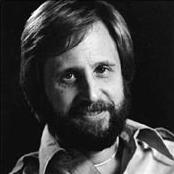
Title
Date
Description
Multiple Available
There are multiple entries on this date. You can modify the date range below to see them all.
Robert Abel & Associates
Established Date: Jan. 1, 1971
Deceased Date: Jan. 1, 1987
- All
- visual effects
- pioneer
- Tron
- production
- software engineer
- animation
- co-founder
- software
- Art Director
-
Icon of advertising, Harry Marks, provided Bob Abel and his old friend Con Pederson with the opportunity to create a new look for ABC television. From 1971 to 1973, in 6,000 square feet of vacant space behind an accountant's office, the fledgling Robert Abel & Associates began to take shape. There was no phone, no sign on the building, no advertising, and no secretary; just Abel, Con, an optical guy named Dick Alexander, and a cameraman named Dave Stuart.
-
 Brilliance (Sexy Robot) - 1985
Brilliance (Sexy Robot) - 1985 -
Larry Cuba joined RAA for a short time at the start of 1976, hoping to program the new motion-control computers. He left just four months later, however, to create the famous Death Star graphics for George Lucas' Star Wars.
Larry Cuba visit -
Abel assembled a team to work on Star Trek: The Motion Picture, but the work eventually was discontinued at Abel's and was completed by Doug Trumbull and others.
Star Trek The Motion Picture .. almost -
Among Abel's early associates were Richard Hollander, John Hughes, Richard Taylor, and Wayne Kimall. By 1979, Abel's was a full-service effects company with a miniature shop and six different motion-control rigs to augment live-action footage. A real breakthrough came when they wanted to have a way to preview motion control moves. To this end, Bill Kovacs was hired to modify an E&S real-time vector PS-2 flight simulation computer. A deal was made to acquire the source code for the $100,000 …
early crew and motion control -
RAA sold its own software under the division Abel Image Research. Bill Kovacs left to found Wavefront, and Frank Vitz took over his job as head of R&D at Abel's.
Abel Image Research - software -
Disney awarded a CG effects job for the film The Black Hole to an independent company called Neo Plastics, which was run by C.D. Taylor and Mick Hagerty. They, in turn, hired John Hughes to create a vector graphics grid/black hole simulation. John rented Abel's E&S system and shot the images off the screen, optically compositing the CG with artwork and additional traditional animation. Unfortunately, once he had the job, he also realized that he had to deliver it in …
The Black Hole -
Kenny Merman and Frank Vitz headed the team that produced the opening titles and "Flynn's Ride" sequences of the movie Tron.
Tron - opening credits -
At its peak, RAA occupied some 45,000 square feet and employed 240 people. With the best of intentions, Robert Abel & Associates was sold in September of 1986 to Omnibus Computer Graphics of Canada for $6.5 million. The hope was to gain much needed capital investment from an established, publicly traded company. As soon as January of 1987, it was clear that all was not right with the new parent company. Sure enough, on April 12 of that year, all …
The End (DOA) -
 Abel 1982 demo reel
Abel 1982 demo reel -
 Logo
Logo -
 Kenneth (Kenny) Mirman
Kenneth (Kenny) Mirman -
 DOA
DOA -
 Frank Vitz
Frank Vitz -
 TRON
TRON -
 John Hughes
John Hughes -
 Con Pederson
Con Pederson -
 Richard Hollander
Richard Hollander -
 Abel Image Research
Abel Image Research -
 Robert (Bob) Abel
Robert (Bob) Abel -
 Bill Kovacs
Bill Kovacs -
 Richard Taylor
Richard Taylor
Larry Cuba visit
Larry Cuba joined RAA for a short time at the start of 1976, hoping to program the new motion-control computers. He left just four months later, however, to create the famous Death Star graphics for George Lucas' Star Wars.
Star Trek The Motion Picture .. almost
Abel assembled a team to work on Star Trek: The Motion Picture, but the work eventually was discontinued at Abel's and was completed by Doug Trumbull and others.
early crew and motion control
Among Abel's early associates were Richard Hollander, John Hughes, Richard Taylor, and Wayne Kimall. By 1979, Abel's was a full-service effects company with a miniature shop and six different motion-control rigs to augment live-action footage. A real breakthrough came when they wanted to have a way to preview motion control moves. To this end, Bill Kovacs was hired to modify an E&S real-time vector PS-2 flight simulation computer. A deal was made to acquire the source code for the $100,000 machine in exchange for promising to E&S that Abel's would not go into the flight simulator business. Eventually, with new employee Ray Feeney's help, the resulting "Abel/Kovaks box" drove six axes of movement in both the camera and the motion controlled object for virtually unlimited range of motion combinations.
Abel Image Research - software
RAA sold its own software under the division Abel Image Research. Bill Kovacs left to found Wavefront, and Frank Vitz took over his job as head of R&D at Abel's.
The Black Hole
Disney awarded a CG effects job for the film The Black Hole to an independent company called Neo Plastics, which was run by C.D. Taylor and Mick Hagerty. They, in turn, hired John Hughes to create a vector graphics grid/black hole simulation. John rented Abel's E&S system and shot the images off the screen, optically compositing the CG with artwork and additional traditional animation. Unfortunately, once he had the job, he also realized that he had to deliver it in a mere 14 days. Not only did John actually finish the job in just nine days, Disney liked it so much they had him repeat the effect for the film's opening sequence and one-sheet poster.
Tron - opening credits
Kenny Merman and Frank Vitz headed the team that produced the opening titles and "Flynn's Ride" sequences of the movie Tron.
The End (DOA)
At its peak, RAA occupied some 45,000 square feet and employed 240 people. With the best of intentions, Robert Abel & Associates was sold in September of 1986 to Omnibus Computer Graphics of Canada for $6.5 million. The hope was to gain much needed capital investment from an established, publicly traded company. As soon as January of 1987, it was clear that all was not right with the new parent company. Sure enough, on April 12 of that year, all the Omnibus people left en mass in the evening. The next day, with word that Omnibus had defaulted on mountains of dept, all of Abel's had one last party before packing up for good.
Icon of advertising, Harry Marks, provided Bob Abel and his old friend Con Pederson with the opportunity to create a new look for ABC television. From 1971 to 1973, in 6,000 square feet of vacant space behind an accountant's office, the fledgling Robert Abel & Associates began to take shape. There was no phone, no sign on the building, no advertising, and no secretary; just Abel, Con, an optical guy named Dick Alexander, and a cameraman named Dave Stuart.
